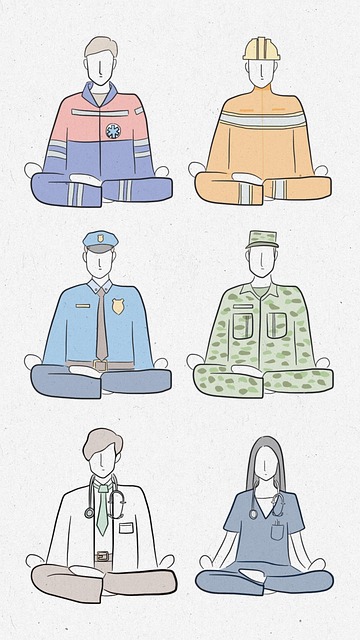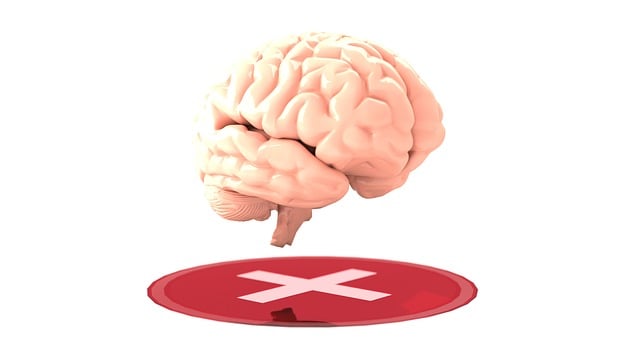In today's digital era, schools play a vital role in addressing children and adolescents' mental health through comprehensive educational initiatives. Integrating therapeutic techniques like Exposure and Response Prevention (ERP), self-awareness exercises, and resilience building equips students to manage stress, anxiety, and other challenges early on. Mental wellness journaling enhances self-reflection and emotional expression, fostering open dialogue about mental wellness. An impactful program combines theoretical knowledge with practical application, empowering youth to develop lasting positive habits and transform schools into hubs for holistic well-being. Therapy for Children using ERP has proven effective in crisis intervention and emotional healing, providing a structured framework to support vulnerable youth.
Mental health is a vital aspect of overall well-being, yet it’s often overlooked in education. This article explores the design of mental health education programs tailored for schools, focusing on the pressing need for early intervention. We delve into key components, emphasizing theory and practice integration. Specifically, we highlight evidence-based strategies such as Exposure and Response Prevention (ERP) techniques, which have proven effective in therapy for children. By implementing these approaches, schools can create a supportive environment fostering resilience and emotional well-being among students.
- Understanding the Need for Mental Health Education in Schools
- Key Components of an Effective Program: Theory and Practice
- Implementing Evidence-Based Strategies: Therapy for Children using Exposure and Response Prevention Techniques
Understanding the Need for Mental Health Education in Schools

In today’s digital era, mental health among children and adolescents has emerged as a paramount concern, underscoring the urgent need for comprehensive education within schools. The demands of modern life often leave young individuals grappling with stress, anxiety, and other mental health challenges. Therapy for Children, such as Exposure and Response Prevention (ERP), offers valuable tools to address these issues early on. By integrating Self-Awareness Exercises and Resilience Building into the curriculum, schools can play a pivotal role in equipping students with coping mechanisms and fostering a culture of open dialogue around mental wellness.
Furthermore, Mental Wellness Journaling Exercise Guidance can serve as an effective means to encourage self-reflection and emotional expression. This practice allows students to document their thoughts, feelings, and experiences, thereby enhancing their Self-Awareness and promoting positive mental health habits that will benefit them throughout their lives. Such proactive measures are transformative, promising a future where schools not only educate minds but also nurture the holistic well-being of their students.
Key Components of an Effective Program: Theory and Practice

An effective mental health education program should integrate both theory and practice to foster meaningful change. Theoretical frameworks provide a solid foundation by offering evidence-based strategies for addressing various mental health concerns. For instance, techniques like Exposure and Response Prevention (ERP), a component often used in Therapy for Children, can be effectively taught through theoretical exposition, allowing participants to understand its application and benefits.
Practical components are equally vital, enabling individuals to apply learned theories in real-world scenarios. Role-playing exercises, case studies, and group discussions facilitate the internalization of emotional healing processes. Additionally, healthcare providers should be equipped with burnout prevention strategies, considering the demanding nature of their work. Cultural sensitivity is another crucial aspect, ensuring that mental healthcare practices are inclusive and respectful, addressing diverse needs within a variety of communities.
Implementing Evidence-Based Strategies: Therapy for Children using Exposure and Response Prevention Techniques

Implementing evidence-based strategies is paramount in mental health education programs, especially when focusing on therapy for children. Exposure and Response Prevention (ERP) techniques have proven to be highly effective in treating anxiety disorders in youth. This approach involves gradually exposing children to situations that trigger their anxiety while teaching them specific response prevention skills to manage their emotions. For instance, a child with a fear of public speaking might start by imagining themselves on stage, then move on to watching videos of speeches, and eventually participating in mock presentations, all while learning techniques to calm their nerves.
By integrating ERP into mental health education, professionals empower children with tools to confront their fears and reduce anxiety symptoms. This strategy not only aids in crisis intervention guidance but also fosters emotional healing processes. Furthermore, it complements risk management planning for mental health professionals by offering a structured framework to support vulnerable youth in navigating their emotional challenges.
Mental health education programs, armed with evidence-based strategies like therapy for children using exposure and response prevention techniques, can significantly enhance student well-being. By incorporating key components, such as theoretical foundations, practical application, and ongoing evaluation, schools can create supportive environments that foster resilience and mitigate mental health challenges. In today’s digital era, it’s crucial to prioritize these programs not just as a peripheral aspect but as an integral part of education, ensuring every student receives the support they need for optimal growth and development.














